Do you have a question about the Philips 50PF9431D/37E and is the answer not in the manual?
Explanation of common safety symbols and their meanings for safe operation.
Covers essential safety guidelines for operating the television, including handling, placement, and power.
Details conditions under which the appliance requires professional servicing.
Advises on stability, avoiding tip-over hazards, and proper wall mounting procedures.
Instructions for grounding outdoor antenna systems for protection against surges.
Precautions for safe battery installation and usage to prevent leakage.
Provides initial setup and basic operation instructions for the television.
Detailed guide on operating the TV using the provided remote control.
Guidelines for general handling, placement, and cleaning of the television set.
Instructions for cleaning and maintaining the TV screen to prevent damage.
Details on wall mounting and the risk of permanent image retention from static content.
Preliminary steps and warnings before setting up the TV and connecting devices.
Diagram and description of the TV's rear input/output ports for connections.
Diagram and description of the TV's side input/output ports for connections.
Instructions for connecting the TV to cable or satellite sources.
Instructions for connecting the TV to a power source.
Instructions on inserting batteries and operating the remote control.
Covers power, mode selection, demo, clock, content access, and confirmation buttons.
Buttons for menu navigation, volume control, and source selection.
Buttons for accessing menus, Picture-in-Picture, and displaying information.
Buttons for channel browsing, direct selection, and input source switching.
Buttons for managing and displaying favorite channels.
How to adjust the display format of the picture for various aspect ratios.
Explains how to use number buttons for text entry and character selection.
Accessing multimedia files and personalized content via the My Content menu.
How to navigate through the TV menu for settings and channel management.
Using physical TV buttons for volume, menu navigation, and power.
Steps for initial TV setup, including language selection and on-screen instructions.
Procedure for selecting the preferred language for on-screen menus.
Explains access and navigation of the main Settings menu.
Adjusting picture and sound preferences within the settings menu.
Details on Setup options like language, picture, sound, and features.
Accessing and using the demonstration mode to explore TV features.
Guide to accessing the installation menu for TV channel setup.
Procedure for selecting the preferred language for on-screen menus.
Steps for scanning and storing available TV channels using Autoprogram.
Selecting between Antenna or Cable installation modes for channel scanning.
Information on tuning channels, available ranges, and handling of audio-only digital subchannels.
Explanation of digital broadcasting standards for multiple program channels under one number.
Information on the potential delay in selecting digital channels due to processing.
Manually tuning weak ATSC channels to optimize signal quality.
Instructions for upgrading TV software using a USB device.
Accessing and adjusting personal preferences for picture and sound.
Detailed settings for picture and sound adjustments.
Selecting preferred formats for Picture-in-Picture or Dual Screen display.
Adjusting the position of the Picture-in-Picture window on the screen.
Automatically adjusts surround sound settings for encoded programs.
Selecting closed captioning levels for analog broadcasts.
Configuring how digital captions are displayed, including service channels.
Customizing the appearance of digital captions like size, style, and text color.
Adding region ratings lock options to existing parental controls.
Adjusting On-Screen Display (OSD) preferences for temporary information.
Selecting priority levels for emergency alert messages.
Setting or changing the personal 4-digit access code for TV lock functions.
Resetting picture and sound settings to their factory default values.
Identifying and selecting connected external accessory devices.
Connecting and configuring digital audio inputs and outputs.
Setting the TV's clock for accurate time display and features.
Configuring automatic or manual clock time synchronization.
Selecting a channel for automatic time synchronization.
Manually setting the time and day for the TV clock.
Setting local time zone and managing daylight saving time adjustments.
Adjusting picture quality settings like contrast, brightness, and color.
Adjusting sound output, balance, and mode for optimal audio.
Selecting predefined picture settings or personal preferences.
Adjusting contrast, brightness, and color saturation for optimal picture.
Adjusting picture sharpness and white balance for desired color tint.
Settings for line doubling, pixel processing, and digital noise reduction.
Adjusting dynamic contrast and color enhancement for improved image.
Adjusting picture hue (tint) and display aspect ratio format.
Continuously measures and corrects incoming signals for optimal picture.
Selecting predefined sound settings or personal preferences.
Adjusting sound output level, speaker balance, and headphone volume.
Selecting sound modes and swapping between Main/Second audio programs.
Selecting language for digital audio and sound mode for analog broadcasts.
Automatically reduces volume differences between channels for consistent level.
Correcting permanent volume differences between channels or sources.
Displaying transmitted CC or CS text on screen based on service selection.
Setting a time period after which the TV automatically turns to standby.
Preventing channel viewing after a selectable time delay.
Completely locking specific TV channels or external sources.
Controlling program access based on age-based and content-based TV ratings (V-chip).
Controlling access to movies based on MPAA ratings.
Controlling access to individual programs based on broadcast regional ratings.
Clearing all content from the Region ratings lock menu.
Managing a list of preferred TV channels for easier browsing.
Browsing and playing files (pictures, music) stored on a USB device.
Lists the file formats compatible with the multimedia browser.
Instructions for inserting and removing USB devices.
Explains functions like Details, Transitions, Slide time, Rotate, Repeat, and Shuffle.
Details on remote buttons for playing, pausing, and stopping multimedia content.
Overview of various connector cables and their required audio connections.
Important warnings regarding correct connections and signal standards.
Notes on component video connections, color coding, and signal standards.
Instructions for connecting cameras, camcorders, and game consoles.
Information on connecting headphones and using the USB port.
Illustrates connections for a VCR or DVD recorder to the TV.
Tips on cable coding, S-VHS quality, and mono/stereo audio.
Illustrates connections for recorders and other A/V devices.
Tips on cable coding, S-VHS quality, and mono/stereo audio.
Illustrates connecting a recorder and cable box via RF output.
Tips on cable coding, S-VHS quality, and mono/stereo audio.
Illustrates connecting satellite/cable boxes with A/V outputs.
Tips on cable coding, S-VHS quality, and mono/stereo audio.
Illustrates connecting recorders and satellite/cable boxes with A/V outputs.
Tips on cable coding, S-VHS quality, and mono/stereo audio.
Connecting devices with YPbPr outputs like cable boxes and DVD players.
Connecting devices with RGB output and separate sync signals.
Connecting devices using an S-Video cable for improved picture quality.
Connecting HDMI devices such as cable boxes, DVD players, or computers.
Connecting a PC with DVI output to the TV via HDMI.
Connecting a PC with VGA output to the TV using RGB H/V connectors.
Instructions on how to record TV programs using your recorder's tuner.
Explains which buttons on the TV remote control can operate audio/video equipment.
Lists common symptoms and checks to perform before contacting service.
Steps to take when the TV has no sound or the sound is poor.
Troubleshooting steps for remote control and peripheral device problems.
Troubleshooting steps for software installation and VGA picture synchronization problems.
Information on TV behavior during standby, after shutdown, and glossary of terms.
Explains benefits, preparation of USB device, and verification of current software version.
Details automatic and manual procedures for upgrading TV software via USB.
Steps for performing an automatic software upgrade via USB.
Steps for performing a manual software upgrade using a specific file structure.
Explains how to create Philips slideshow files with background audio.
Guidelines for referencing content and the XML syntax for creating slideshow files.
Description of XML tags used for creating slideshow files.
Troubleshooting steps for connecting digital cameras to the TV.
Information and requirements for USB memory devices to be detected by the TV.
Lists the TV and monitor display modes supported via HDMI.
Information on audio muting, HDCP, and potential compatibility issues with HDMI.
Guidelines for recycling product packaging and the old product.
Instructions for the correct disposal of batteries according to local regulations.
Details FCC compliance, modifications, cable requirements, and Canadian notice.
Information on plasma display performance at different altitudes and air pressures.
Details on the security slot for preventing theft.
Details the terms and conditions of the one-year limited warranty.
Identifies who is eligible, what's covered, and what's excluded from warranty.
Provides contact information for obtaining assistance under the warranty.
Explanation of common safety symbols and their meanings for safe operation.
Covers essential safety guidelines for operating the television, including handling, placement, and power.
Details conditions under which the appliance requires professional servicing.
Advises on stability, avoiding tip-over hazards, and proper wall mounting procedures.
Instructions for grounding outdoor antenna systems for protection against surges.
Precautions for safe battery installation and usage to prevent leakage.
Provides initial setup and basic operation instructions for the television.
Detailed guide on operating the TV using the provided remote control.
Guidelines for general handling, placement, and cleaning of the television set.
Instructions for cleaning and maintaining the TV screen to prevent damage.
Details on wall mounting and the risk of permanent image retention from static content.
Preliminary steps and warnings before setting up the TV and connecting devices.
Diagram and description of the TV's rear input/output ports for connections.
Diagram and description of the TV's side input/output ports for connections.
Instructions for connecting the TV to cable or satellite sources.
Instructions for connecting the TV to a power source.
Instructions on inserting batteries and operating the remote control.
Covers power, mode selection, demo, clock, content access, and confirmation buttons.
Buttons for menu navigation, volume control, and source selection.
Buttons for accessing menus, Picture-in-Picture, and displaying information.
Buttons for channel browsing, direct selection, and input source switching.
Buttons for managing and displaying favorite channels.
How to adjust the display format of the picture for various aspect ratios.
Explains how to use number buttons for text entry and character selection.
Accessing multimedia files and personalized content via the My Content menu.
How to navigate through the TV menu for settings and channel management.
Using physical TV buttons for volume, menu navigation, and power.
Steps for initial TV setup, including language selection and on-screen instructions.
Procedure for selecting the preferred language for on-screen menus.
Explains access and navigation of the main Settings menu.
Adjusting picture and sound preferences within the settings menu.
Details on Setup options like language, picture, sound, and features.
Accessing and using the demonstration mode to explore TV features.
Guide to accessing the installation menu for TV channel setup.
Procedure for selecting the preferred language for on-screen menus.
Steps for scanning and storing available TV channels using Autoprogram.
Selecting between Antenna or Cable installation modes for channel scanning.
Information on tuning channels, available ranges, and handling of audio-only digital subchannels.
Explanation of digital broadcasting standards for multiple program channels under one number.
Information on the potential delay in selecting digital channels due to processing.
Manually tuning weak ATSC channels to optimize signal quality.
Instructions for upgrading TV software using a USB device.
Accessing and adjusting personal preferences for picture and sound.
Detailed settings for picture and sound adjustments.
Selecting preferred formats for Picture-in-Picture or Dual Screen display.
Adjusting the position of the Picture-in-Picture window on the screen.
Automatically adjusts surround sound settings for encoded programs.
Selecting closed captioning levels for analog broadcasts.
Configuring how digital captions are displayed, including service channels.
Customizing the appearance of digital captions like size, style, and text color.
Adding region ratings lock options to existing parental controls.
Adjusting On-Screen Display (OSD) preferences for temporary information.
Selecting priority levels for emergency alert messages.
Setting or changing the personal 4-digit access code for TV lock functions.
Resetting picture and sound settings to their factory default values.
Identifying and selecting connected external accessory devices.
Connecting and configuring digital audio inputs and outputs.
Setting the TV's clock for accurate time display and features.
Configuring automatic or manual clock time synchronization.
Selecting a channel for automatic time synchronization.
Manually setting the time and day for the TV clock.
Setting local time zone and managing daylight saving time adjustments.
Adjusting picture quality settings like contrast, brightness, and color.
Adjusting sound output, balance, and mode for optimal audio.
Selecting predefined picture settings or personal preferences.
Adjusting contrast, brightness, and color saturation for optimal picture.
Adjusting picture sharpness and white balance for desired color tint.
Settings for line doubling, pixel processing, and digital noise reduction.
Adjusting dynamic contrast and color enhancement for improved image.
Adjusting picture hue (tint) and display aspect ratio format.
Continuously measures and corrects incoming signals for optimal picture.
Selecting predefined sound settings or personal preferences.
Adjusting sound output level, speaker balance, and headphone volume.
Selecting sound modes and swapping between Main/Second audio programs.
Selecting language for digital audio and sound mode for analog broadcasts.
Automatically reduces volume differences between channels for consistent level.
Correcting permanent volume differences between channels or sources.
Displaying transmitted CC or CS text on screen based on service selection.
Setting a time period after which the TV automatically turns to standby.
Preventing channel viewing after a selectable time delay.
Completely locking specific TV channels or external sources.
Controlling program access based on age-based and content-based TV ratings (V-chip).
Controlling access to movies based on MPAA ratings.
Controlling access to individual programs based on broadcast regional ratings.
Clearing all content from the Region ratings lock menu.
Managing a list of preferred TV channels for easier browsing.
Browsing and playing files (pictures, music) stored on a USB device.
Lists the file formats compatible with the multimedia browser.
Instructions for inserting and removing USB devices.
Explains functions like Details, Transitions, Slide time, Rotate, Repeat, and Shuffle.
Details on remote buttons for playing, pausing, and stopping multimedia content.
Overview of various connector cables and their required audio connections.
Important warnings regarding correct connections and signal standards.
Notes on component video connections, color coding, and signal standards.
Instructions for connecting cameras, camcorders, and game consoles.
Information on connecting headphones and using the USB port.
Illustrates connections for a VCR or DVD recorder to the TV.
Tips on cable coding, S-VHS quality, and mono/stereo audio.
Illustrates connections for recorders and other A/V devices.
Tips on cable coding, S-VHS quality, and mono/stereo audio.
Illustrates connecting a recorder and cable box via RF output.
Tips on cable coding, S-VHS quality, and mono/stereo audio.
Illustrates connecting satellite/cable boxes with A/V outputs.
Tips on cable coding, S-VHS quality, and mono/stereo audio.
Illustrates connecting recorders and satellite/cable boxes with A/V outputs.
Tips on cable coding, S-VHS quality, and mono/stereo audio.
Connecting devices with YPbPr outputs like cable boxes and DVD players.
Connecting devices with RGB output and separate sync signals.
Connecting devices using an S-Video cable for improved picture quality.
Connecting HDMI devices such as cable boxes, DVD players, or computers.
Connecting a PC with DVI output to the TV via HDMI.
Connecting a PC with VGA output to the TV using RGB H/V connectors.
Instructions on how to record TV programs using your recorder's tuner.
Explains which buttons on the TV remote control can operate audio/video equipment.
Lists common symptoms and checks to perform before contacting service.
Steps to take when the TV has no sound or the sound is poor.
Troubleshooting steps for remote control and peripheral device problems.
Troubleshooting steps for software installation and VGA picture synchronization problems.
Information on TV behavior during standby, after shutdown, and glossary of terms.
Explains benefits, preparation of USB device, and verification of current software version.
Details automatic and manual procedures for upgrading TV software via USB.
Steps for performing an automatic software upgrade via USB.
Steps for performing a manual software upgrade using a specific file structure.
Explains how to create Philips slideshow files with background audio.
Guidelines for referencing content and the XML syntax for creating slideshow files.
Description of XML tags used for creating slideshow files.
Troubleshooting steps for connecting digital cameras to the TV.
Information and requirements for USB memory devices to be detected by the TV.
Lists the TV and monitor display modes supported via HDMI.
Information on audio muting, HDCP, and potential compatibility issues with HDMI.
Guidelines for recycling product packaging and the old product.
Instructions for the correct disposal of batteries according to local regulations.
Details FCC compliance, modifications, cable requirements, and Canadian notice.
Information on plasma display performance at different altitudes and air pressures.
Details on the security slot for preventing theft.
Details the terms and conditions of the one-year limited warranty.
Identifies who is eligible, what's covered, and what's excluded from warranty.
Provides contact information for obtaining assistance under the warranty.
| Screen Size | 50 inches |
|---|---|
| Display Type | LCD |
| HDMI Ports | 3 |
| USB Ports | 1 |
| Aspect Ratio | 16:9 |
| Response Time (typical) | 8 ms |
| Component Video Input | 1 |
| Composite Video Input | 1 |
| S-Video Input | 1 |
| Speakers | 2 |
| Pixel Plus 3 HD | Yes |
| Built-in Tuner | Yes |
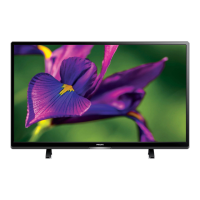
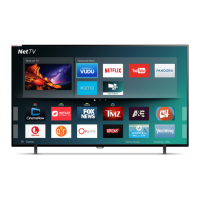
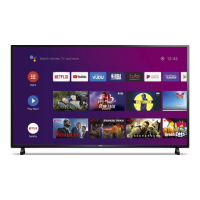

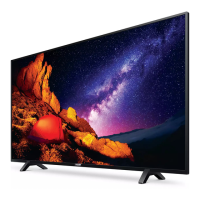



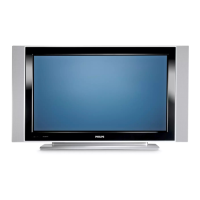

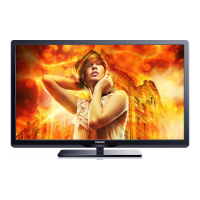
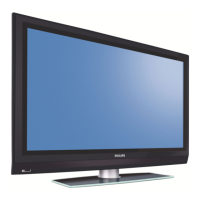
